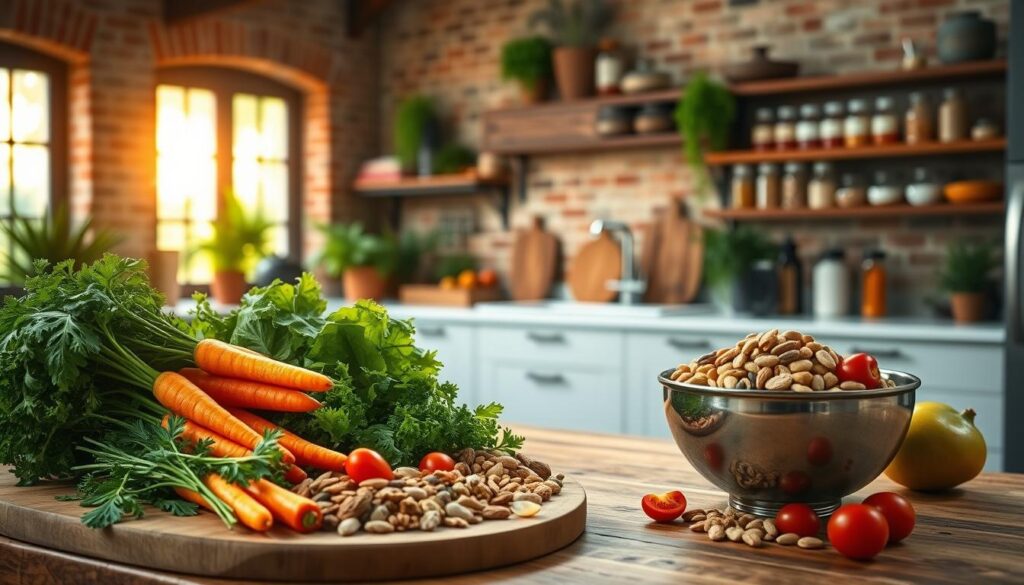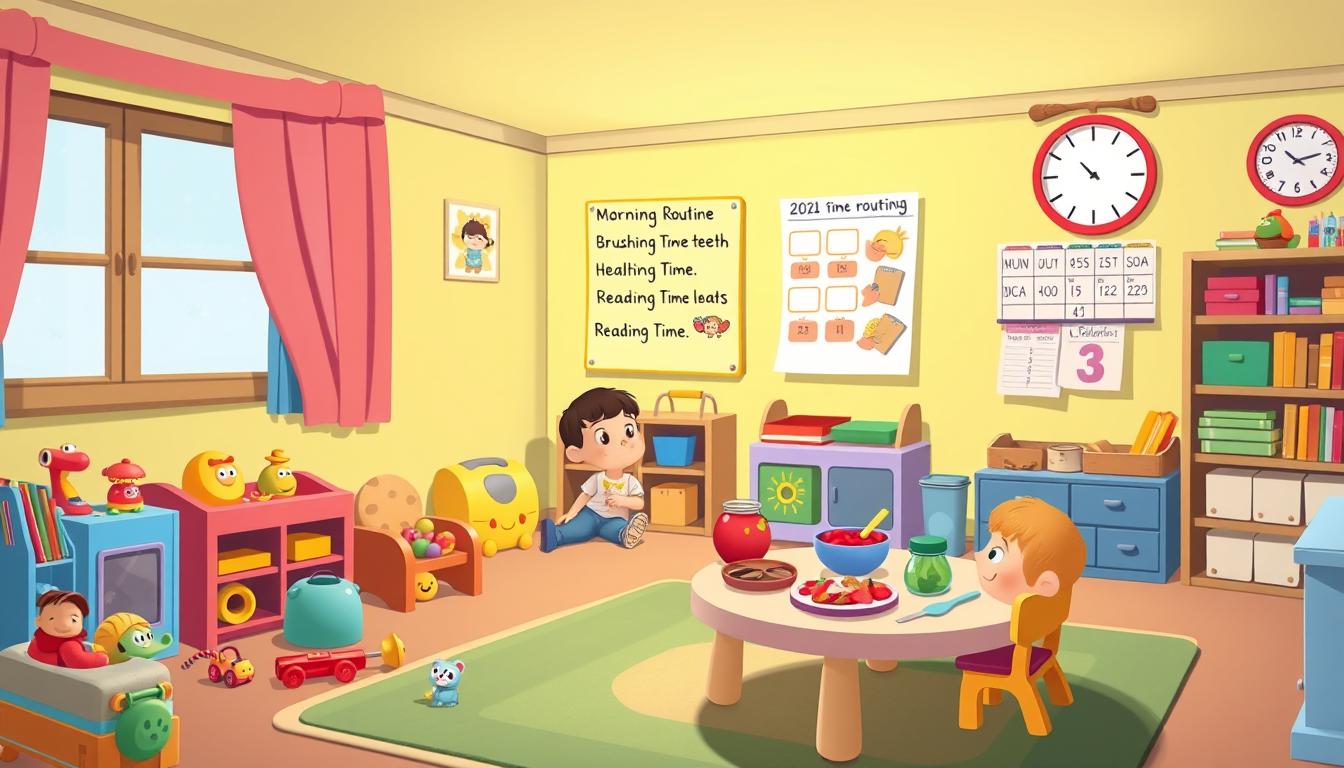Picky Eaters? Help Them Love Veggies with These Parent-Approved Tips

It’s tough to get picky eaters to like veggies. Kids often don’t want to try new foods, like green ones. If you’re having trouble, you’re not alone. Teaching kids to love veggies is key to healthy eating habits.
It’s hard to get picky eaters to like veggies, but it’s doable. They need patience, creativity, and persistence. Knowing what works for your child helps them love veggies forever.
Vegetables are super important for kids. They have nutrients, vitamins, and minerals that help kids grow. By getting picky eaters to eat veggies, parents help them stay healthy and avoid diseases.
Key Takeaways
- Learning how to get picky eaters to love vegetables is essential for their health and well-being.
- Picky eaters require patience, creativity, and persistence when introducing new foods.
- Understanding what works best for your child is key in helping them love veggies.
- Vegetables provide essential nutrients, vitamins, and minerals that support growth and development.
- Encouraging picky eaters to eat veggies helps them develop healthy habits and avoid diseases.
- With the right strategies, picky eaters can learn to love veggies and develop healthy eating habits.
Understanding the Challenge of Picky Eating
Picky eaters can be tough for parents and caregivers. They often don’t like vegetables and healthy foods. It’s key to know why they might be picky.
Studies show picky eaters are more sensitive to textures, smells, and tastes. This makes them hesitant to try new foods, like veggies.
Some reasons for not liking veggies include not trying many veggies before. Maybe they had a bad experience with one. Or they might prefer junk food to healthy food. Knowing these reasons helps parents and caregivers find ways to get kids to like veggies.
Common Reasons for Vegetable Aversion
- Lack of exposure to a variety of vegetables
- Unpleasant experience with a particular vegetable
- Preference for processed foods over whole, healthy options
The Psychology Behind Food Preferences
It’s important to understand why kids might not like certain foods. Food likes and dislikes come from genes, environment, and culture. By knowing this, parents can make a supportive space for kids to try new foods.
Impact on Health and Development
Not eating enough veggies can harm a child’s health and growth. A diet full of veggies supports healthy growth and a strong immune system. It also lowers the risk of serious diseases. Encouraging kids to eat veggies helps them stay healthy for life.
The Science of Taste Development in Children
It’s important to know how kids pick their favorite foods. Research shows that genes, environment, and experiences shape their eating habits. Introducing many foods, like veggies, early on is key for healthy eating.
Make mealtime fun to encourage good eating habits. Let kids help cook. This lets them try new tastes and textures. It helps them love veggies and healthy foods.
Several things affect how kids taste things:
* Trying new flavors and textures
* Parents helping with meal planning and cooking
* A happy and supportive place to eat
By thinking about these, parents can help their kids eat well for life.
Making Vegetables Fun and Appealing for Picky Eaters
To get kids to love veggies, make mealtime fun. Use creative ways to present them. Try making a veggie face on their plate. This makes eating exciting and fun.
Color-based meal planning is another great idea. Plan meals with different colored veggies. For example, red peppers, orange carrots, and green broccoli. This makes the meal look good and fun to try.
- Use dips or sauces to make veggies more appealing
- Let kids help with meal planning and grocery shopping
- Make it interactive by creating a “vegetable face” on the plate
By using these tips, parents can help kids love veggies. Make mealtime fun and creative. With patience and effort, kids can learn to love veggies and eat healthy for life.
Sneaky Chef Strategies That Actually Work
It’s hard to get kids to eat healthy foods, like veggies. But, you can make it fun with sneaky chef tricks. Try pureeing veggies into sauces or mixing them into dishes they love.
Being a sneaky chef means making healthy food fun for kids. Add chopped veggies to pasta sauces, meatloaf, or burgers. Mix cooked veggies into mashed potatoes or mac and cheese. It’s all about being creative and having fun.
Here are some tips to start:
- Puree cooked veggies into sauces or soups
- Grate or finely chop veggies and add them to favorite dishes
- Use a food processor to mix cooked veggies into meatloaf or burgers
- Make a veggie-based snack, like kale chips or carrot sticks with hummus
Using these tricks makes healthy eating fun for your kids. Involve them in cooking and make it a positive experience. With creativity and patience, you can teach them to eat healthy for life. A sneaky chef can really help kids learn to love healthy food.
Building Positive Associations with Vegetables
Getting kids to like vegetables can be tough. But, with the right steps, it can be fun for everyone. Focus on good nutrition and positive words. Make mealtime fun and interactive.
Let kids help in the kitchen. They’ll learn about veggies and enjoy the meal more. Praise and rewards help them want to eat healthy.
- Creating a vegetable garden together, where kids can learn about the process of growing their own food
- Planning meals around their favorite vegetables or dishes
- Engaging in cooking activities, such as chopping, stirring, or mixing
Use these tips to help kids love veggies. Be patient and keep it positive. They’ll make healthy choices for life.
| Vegetable | Health Benefits | Fun Facts |
|---|---|---|
| Broccoli | Rich in vitamins and antioxidants | Can be grown in a variety of colors, including purple and white |
| Carrots | High in vitamin A, supporting healthy vision | Can be used as a natural food coloring |
| Spinach | Packed with iron and calcium | Can be used in a variety of dishes, from smoothies to salads |
Transforming Texture and Taste
Healthy eating can be fun for picky eaters. Parents can make mealtime better with a few tricks. Try different cooking ways like roasting or grilling to make veggies sweet.
Seasonings and herbs can also change how veggies taste. A bit of parmesan cheese or olive oil can make steamed broccoli yummy. How you present veggies matters too. Make them colorful and fun to look at.
Here are some tips to change how veggies taste and feel:
- Try sautéing or stir-frying to add texture and flavor
- Use different seasonings and herbs like basil or oregano
- Make veggies look fun, like a veggie face on a plate

Using these tips, parents can make eating healthy fun for kids. This helps kids love veggies and eat well for life.
The Power of Persistence and Patience
Introducing new veggies to picky eaters takes time and patience. Many parents face challenges getting their kids to like veggies. But, with persistence and the right approach, it’s possible.
Research shows that kids are more likely to accept new foods with repeated tries. For picky eaters, patience is key. It’s not about forcing them to eat something they don’t like.
Instead, it’s about making veggies positive. This way, kids can learn to love veggies and develop good eating habits. It’s important to remember it may take many tries before a child enjoys a veggie.
- Offer a variety of vegetables to find what their child likes
- Involve their child in the cooking process to make mealtime more engaging
- Be patient and don’t give up, as repeated exposures can lead to acceptance
By following these tips and staying patient, parents can help their kids love veggies. This leads to a healthier and happier life.
Social Influences and Peer Learning
Kids’ eating habits are shaped by family and friends. How parents show veggies can make a big difference. Knowing this helps parents teach kids to eat well.
Family meals are key. When they’re fun, kids are more open to new foods. Friends also play a part, as kids often copy what they see. Parents can use these facts to help kids eat better.

- Parents should eat well too. This shows kids it’s cool.
- Make meals fun. A happy mealtime makes kids want to try new things.
- Have friends over. This shows healthy eating is normal and fun.
Understanding how family and friends affect eating habits is important. Parents can use this knowledge to teach kids to love veggies and healthy foods. Happy mealtime and social support can help kids eat well for life.
Expert-Recommended Vegetable Introduction Methods
Introducing veggies to kids needs a good plan. Experts say certain ways can really help. Starting slow can help kids like new foods.
Some top ways to introduce veggies include:
- Starting with small portions to avoid overwhelming the child
- Offering a variety of vegetables to find what the child likes
- Making it fun by creating a game or a reward system
These methods help kids eat healthy and love veggies. A good plan is key. It’s the first step to better nutrition.
Conclusion: Your Journey to Vegetable Victory
Starting your journey to get your picky eater to love veggies is exciting. Be patient, keep trying, and be creative. Every little success is something to cheer about.
With the right plan and dedication, you can change how your child sees healthy food. This will help them enjoy eating for years to come.
Keep going, try new things, and let your child help out. Make mealtime fun and a team effort. This way, they’ll grow to love vegetables for good.
Your hard work and flexibility will make a big difference. You’ll create a happy, healthy family that loves to eat together.
Remember, small steps lead to big changes. Enjoy the journey, celebrate every win, and believe in your child’s growth. Soon, they’ll be a veggie fan. Bon appétit!
FAQ
How can I get my picky eater to love vegetables?
What are the common reasons for vegetable aversion in children?
How does taste development in children influence their preferences for vegetables?
What are some creative ways to make vegetables fun and appealing for picky eaters?
How can I “sneak” more vegetables into my child’s meals without them noticing?
How can I build positive associations with vegetables for my picky eater?
What are some tips for transforming the texture and taste of vegetables to make them more appealing?
How much persistence and patience is required to get picky eaters to love vegetables?
How can social influences and peer learning impact a child’s willingness to eat vegetables?
What are some expert-recommended methods for introducing vegetables to picky eaters?
RELATED POSTS
View all


